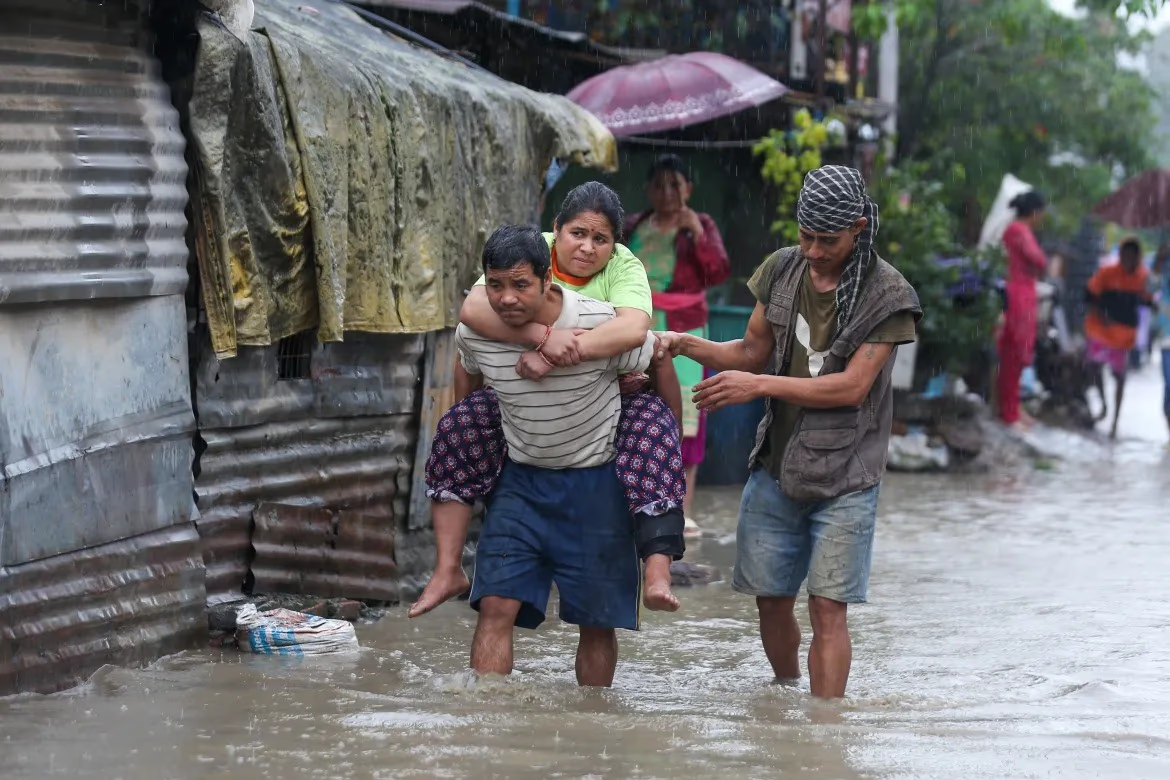Homes, roads, bridges, and tall buildings seem to have been engulfed by water. Millions of lives have suddenly become vulnerable. As far as the eye can see, there's nothing but water, as if it's not a dry land but a part of a river. This is the current scenario in about 13 districts of Bihar where rivers coming from Nepal are wreaking havoc. The destruction is becoming more severe by the day, evoking horrifying memories of 1968 and 2008.
Devastation Struck in 2008...
These days, rivers like Gandak, Kosi, Bagmati, Kamla Balan, and Ganga are overflowing. Millions of lives are in peril. The fear of 2008's disaster is haunting people. The marks of the 2008 disaster still remain in Bihar. According to government statistics, 526 people lost their lives in the catastrophic flood of 2008. Many farmers' fields were permanently destroyed due to sand deposits. Shockingly, about 200,000-300,000 cusecs of water were released from Nepal's side back then.

Source: aajtak
Also Read:
Why This Time is More Dangerous
The current threat is said to be bigger because 661,000 cusecs of water have been released from the Birpur Barrage (Nepal) on the Kosi River, the highest in 56 years and about three times what was released in 2008. In contrast, the figure was 788,000 cusecs in 1968. Additionally, 562,000 cusecs of water have been released from the Valmikinagar Barrage on the Gandak River, the highest since 2003.

Source: aajtak
13 Districts Severely Affected
Officials stated that about 13 districts, including Buxar, Bhojpur, Saran, Patna, Samastipur, Begusarai, Munger, and Bhagalpur located along the Ganges, are already facing flood-like situations. Heavy rainfall has worsened the scenario, affecting approximately 1.35 million people living in lower areas. A large number of people have been evacuated to relief camps from the affected districts.

Source: aajtak
Several Embankments Breached, Water Entered Power Plant
The situation is dire as water has entered the Bakuchi Power Plant in Muzaffarpur's Katra. This is due to the breach in numerous river embankments. Many roads are submerged, bridges have been swept away, and water has entered people's homes. Entire villages are submerged, forcing people to relocate.

Source: aajtak
90 Engineers Working Around the Clock
The Water Resources Department teams are monitoring the embankments 24/7 to instantly address any erosion or threat. The department has mobilized three chief engineers, 17 executive engineers, 25 assistant engineers, and 45 junior engineers, all working round the clock and are on high alert. Water Resources Minister Vijay Kumar Choudhary assured that there is no need to panic.
NDRF Also Deployed
To normalize the situation, teams from NDRF and SDRF are constantly working. Information indicates that the rescue operation was on high alert earlier than usual, and people were warned in advance. The situation is under constant surveillance. Relief has come from the news that rainfall has ceased in Nepal, which could mean a soon stabilization of the situation in Bihar.




